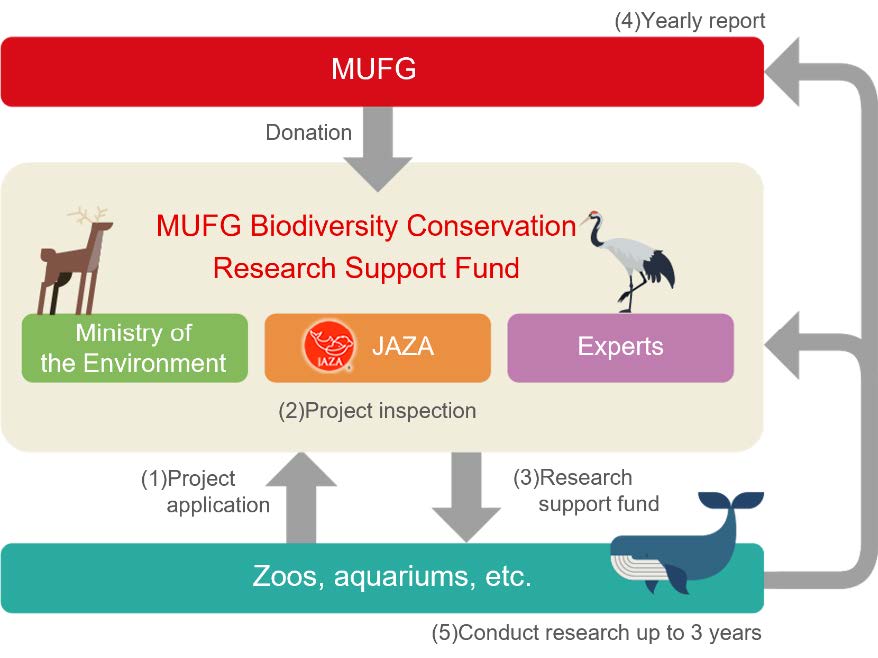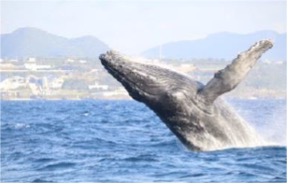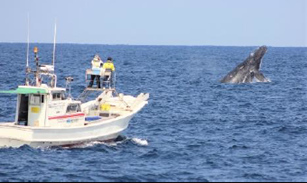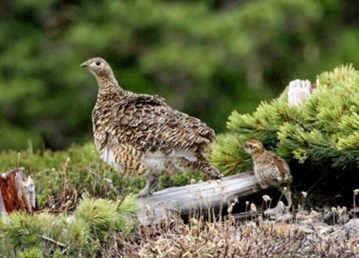Support has been approved for six zoos and aquariums whose research projects, selected through a rigorous review process, are expected to contribute to the conservation of biodiversity
The Japanese Association of Zoos and Aquariums (JAZA) has established the “MUFG Research Grant for Biodiversity Conservation” with a donation from Mitsubishi UFJ Financial Group, Inc. (MUFG).
This donation is part of MUFG’s initiatives addressing “natural capital and biodiversity,” one of the key priorities in its sustainability management.
Zoos and aquariums play significant social, cultural, and economic roles in their local communities. They provide opportunities for people to encounter diverse living organisms, fostering a connection with nature and promoting environmental education. By deepening the understanding of biodiversity and contributing to conservation efforts, these institutions help ensure the survival of species for future generations and offer visitors valuable opportunities to broaden their awareness.
JAZA aims to promote and encourage research activities that meet or exceed the standards of leading zoos and aquariums overseas. To this end, this new program will support research in fields related to biodiversity conservation, thereby advancing and disseminating new scientific knowledge and raising public awareness in the biological sciences.
Mitsubishi UFJ Financial Group, Inc. (hereinafter referred to as MUFG) has identified priority issues to address under its sustainability management framework, aimed at realizing a sustainable environment and society.
As part of initiatives related to “Natural Capital and Biodiversity,” which fall under one of these priority areas, “A Sustainable Society,” MUFG has made a donation to the Japanese Association of Zoos and Aquariums (JAZA) and established the “MUFG Biodiversity Conservation Research Grant Fund.”

Zoos and aquariums play an essential role in species conservation, scientific research, and environmental education, contributing to the captive breeding of endangered species and the preservation of the global environment. They also strive to share information in engaging ways so that people can enjoy learning about the importance of biodiversity conservation as part of social education.
However, compared to advanced zoos and aquariums in Europe and the United States,
Japanese zoos and aquariums face severe financial difficulties, particularly due to a lack of funding for research activities.
To address this challenge, MUFG has established the “MUFG Biodiversity Conservation Research Grant Fund” to support research fields that contribute to the conservation of rare species and biodiversity both in Japan and abroad, as well as initiatives that promote social education.
This time, we invited applications from zoos and aquariums affiliated with JAZA for research projects related to biodiversity and global environmental conservation.
Following a review conducted by a selection committee consisting of researchers and external experts, including representatives from the Ministry of the Environment, support from this fund has been approved for six research projects, as shown in the table below.
Large-scale research projects characterized by outstanding originality, from which exceptionally significant results are expected:
- Comprehensive study toward balancing cetacean conservation and local industry through the use of biologging technology and non-invasive DNA sampling methods (Okinawa Churaumi Aquarium)
- Elucidation of reproductive physiology and ecology through comparison between captive and wild populations for the conservation of the Rock Ptarmigan (Lagopus muta japonica) (Toyama Family Park)
Medium-scale research projects that are challenging and innovative, with the potential to advance and strengthen future conservation research:
- Experimental study on the effects of rearing environments on the development of adaptive behaviors in the Brown Shrike (Lanius cristatus superciliosus): Verification through the development of foraging ability and predator recognition (Toyohashi Zoo & Botanical Park)
- Ecological study of fossorial small mammals using a biological monitoring system (Toyohashi Zoo & Botanical Park)
- Development of methods to maintain genetic diversity for the conservation of the Tsushima Leopard Cat (Prionailurus bengalensis euptilurus) based on integrated genome and PMx analyses (Kyoto City Zoo)
- Trial release of captive Japanese Night Herons (Gorsachius goisagi) toward establishing a conservation-oriented translocation technique (Yokohama Kanazawa Zoological Gardens)
Among the selected projects, two have been recognized for their exceptional originality. Details of these two outstanding studies are provided below.


Okinawa Churaumi Aquarium
Comprehensive study toward balancing cetacean conservation and local industry through the use of biologging technology and non-invasive DNA sampling methods
In the waters surrounding Okinawa, approximately 30 species of cetaceans, including the endangered humpback whale (Megaptera novaeangliae), are known to inhabit the area. However, concerns have arisen regarding the negative impacts of expanding tourism industries and bycatch in fishing gear.
This study aims to achieve a balance between cetacean conservation and sustainable regional industry in Okinawa by addressing the following three objectives:
Data Collection and Application to Conservation:
Behavioral and physiological information obtained from cetaceans housed at Okinawa Churaumi Aquarium will be collected and utilized to support the conservation of wild populations through collaboration with field research conducted outside of captivity.
Response to Strandings:
In the event of cetacean strandings (beaching or disorientation), similar methods will be employed to gather biological data, thereby enhancing the foundational knowledge needed for conservation measures and bycatch prevention.
Assessment of Tourism Impact:
The study will quantitatively assess the effects of whale watching and whale swimming tours on humpback whales using biologging technology combined with non-
invasive DNA sampling via drones, aiming to develop a framework for a sustainable tourism industry.
This research project has been made possible through the extensive experience and technical expertise of the Okinawa Churashima Foundation Research Center, which operates Okinawa Churaumi Aquarium, in collaboration with related universities and local stakeholders.
Expected outcomes include the establishment of a sustainable tourism model that respects animal welfare, the advancement of animal husbandry and management techniques, and contributions to bycatch mitigation strategies. Furthermore, by integrating captive-based studies with multifaceted, non-invasive research approaches, this project will aid in the monitoring and health assessment of endangered species and contribute to building a new foundation for cetacean research.

Toyama Family Park
Elucidation of reproductive physiology and ecology through comparison between captive and wild populations for the conservation of the Rock Ptarmigan (Lagopus muta japonica)
The Rock Ptarmigan (Lagopus muta japonicaÄi0), an endemic bird species of Japan and designated as a Special Natural Monument, inhabits the alpine zones above 2,200 meters in the Japanese Alps, located in central Honshu. It is also the prefectural bird of Toyama, Nagano, and Gifu Prefectures.
Due to the effects of global warming and other environmental changes, this species is now facing the threat of extinction. Its population has declined from approximately 3,000 individuals in the 1980s to fewer than 2,000 in the 2000s. In response, the “Rock Ptarmigan Conservation and Breeding Project Plan” was established in 2012. Since 2015, JAZA and the Ministry of the Environment’s Shinetsu Regional Environment Office have been collaborating to develop captive breeding techniques and promote public awareness for conservation.
In recent years, this project has achieved tangible results through the reintroduction of captive-bred individuals into the wild in the Central Alps of Nagano Prefecture. Going forward, monitoring will continue to determine whether these reintroduced populations can sustainably survive in natural habitats. At the same time, evaluation of past project outcomes has revealed several technical challenges. It is therefore urgent to develop techniques that allow zoos and other institutions to maintain captive populations capable of supporting reintroduction programs, taking into account the fragmented distribution of wild populations.
To address these issues, this study aims to elucidate the reproductive physiology and ecology of the Rock Ptarmigan by comparing captive and wild individuals,
through the following three research objectives:
Improving Breeding Success in Captivity:
To increase hatching and chick-rearing success rates, the study will examine the effects of egg-laying timing and environmental factors on breeding outcomes in captivity.
Maintaining Genetic Diversity:
To preserve genetic diversity both within and outside the species’ natural range, researchers will establish techniques for semen collection and cryopreservation from male birds, while also improving the efficiency of artificial insemination methods.
Field Studies and Capacity Building:
As part of efforts to strengthen research capacity and human resource development, field surveys will be conducted on Mt. Ontake—an area where research has been insufficient—to assess breeding physiology in wild populations. These activities will include territorial surveys and will be carried out through interregional collaboration among Toyama, Nagano, and neighboring prefectures.
Through these research efforts, the study seeks to clarify the physiological and ecological traits of the Rock Ptarmigan, a species adapted to Japan’s unique alpine environments. The outcomes are expected to enhance captive breeding techniques, maintain genetic diversity, and establish effective reintroduction methods, thereby contributing significantly to the long-term conservation of this iconic specie

